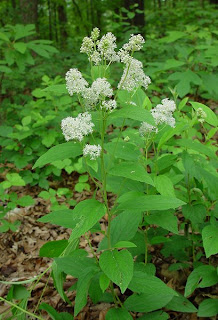PARSLEY

Latin Name: Petroselinum crispum
Alternate Names: Rock Selinen, Rock Parsley
Family: APIACEAE
Parts Used: Leaves, root, seeds.
Properties: Anthelmintic, Antioxidant, Antirheumatic, Antiseptic, Antispasmodic, Aperient, Aphrodisiac, Carminative, Diuretic, Emmenagogue, Expectorant, Laxative, Lithotriptic, Nutritive, Sedative, Tooth Tonic.
Internal Uses: Amenorrhea, Anemia, Arthritis, Asthma, Breast Tenderness, Cancer, Convalescence, Cystitis, Dysmenorrhea, Edema, Fever, Flatulence, Gallstones, Gonorrhea, Gout, Halitosis, Hypertension, Jaundice, Kidney Inflammation, Kidney Stones, Lumbago, Malaria, Pulmonary Edema, Rheumatism, Sciatica, Syphilis
Internal Applications: Tea, Tincture, Capsules.
It is a mild aphrodisiac, as well as a cancer preventative. It helps hypertension due to its diuretic properties. The high chlorophyll content facilitates utilization of oxygen. The volatile oil increases circulation to the digestive tract. In Russia, a preparation containing mostly Parsley juice is given during labor to stimulate uterine contractions.
It is a mild aphrodisiac, as well as a cancer preventative. It helps hypertension due to its diuretic properties. The high chlorophyll content facilitates utilization of oxygen. The volatile oil increases circulation to the digestive tract. In Russia, a preparation containing mostly Parsley juice is given during labor to stimulate uterine contractions.
Topical Uses: Bruises, Eye Fatigue, Insect Bites, Insect Repellent, Skin Dryness, Sprains, Toothache
Topical Applications: Use as a poultice for bruises, sprains and insect bites. Rubbed on body to repel mosquitoes. Juice is used to treat toothache. Use as a hair rinse or as a facial steam for dry skin. Skin lotion. Eyewash for tired eyes.
Culinary uses: Salads, egg dishes, soup, stews, fish, dips, potatoes, tomatoes, bouquet garnish. It is a popular garnish herb, but eat it - do not waste it! It freshens Garlic breath. Root is eaten in salads or cooked as a vegetable and added to soups and stews.
Energetics: Neutral, Sweet.
Chemical Constituents: Essential oil (apiole, myristicin, limonene, eugenol), coumarins, glycoside (apiin), flavonoids (apigenin), chlorophyll, protein, beta carotene, vitamins C and K, iron, magnesium, histadine, calcium.
Contraindications: Large amounts are contraindicated during pregnancy, as apiole is a uterine stimulant. Some birds are poisoned by Parsley, however most other animals eat it. Avoid excessive amounts of the seeds.
Comments: Dioscorides, a Greek herbalist, named this genus Petroselinum from petros, meaning 'rock', and selinon, meaning 'celery'. The ancient Greeks believed that Parsley sprang from the blood of Archemorus, who was the herald of death. Soldiers would avoid eating it before battle. It was used to make wreaths for the dead and placed on their tombs. Parsley was also associated with Persephone, the Queen of the Underworld. Romans wore Parsley garlands during feasts to prevent drunkeness. It was also used to garland victorious Greek athletes in the Nemean Games. In Jewish Seders it is eaten to symbolize new beginnings.
Because it takes a long time to germinate, there is a lot of legend surrounding it, such as if Parsley grows successfully by one's home, the woman is the master of the house. The seeds are traditionally planted on Good Friday. During the Middle Ages it was used as a poison antidote.
The common name Parsley includes the speices Petroselinum sativum, Petroselinum tuberosum (Hamburg Parsley) and Petroselinum hortense, which are used interchangeably with Petroselinum crispum.
Because it takes a long time to germinate, there is a lot of legend surrounding it, such as if Parsley grows successfully by one's home, the woman is the master of the house. The seeds are traditionally planted on Good Friday. During the Middle Ages it was used as a poison antidote.
The common name Parsley includes the speices Petroselinum sativum, Petroselinum tuberosum (Hamburg Parsley) and Petroselinum hortense, which are used interchangeably with Petroselinum crispum.

